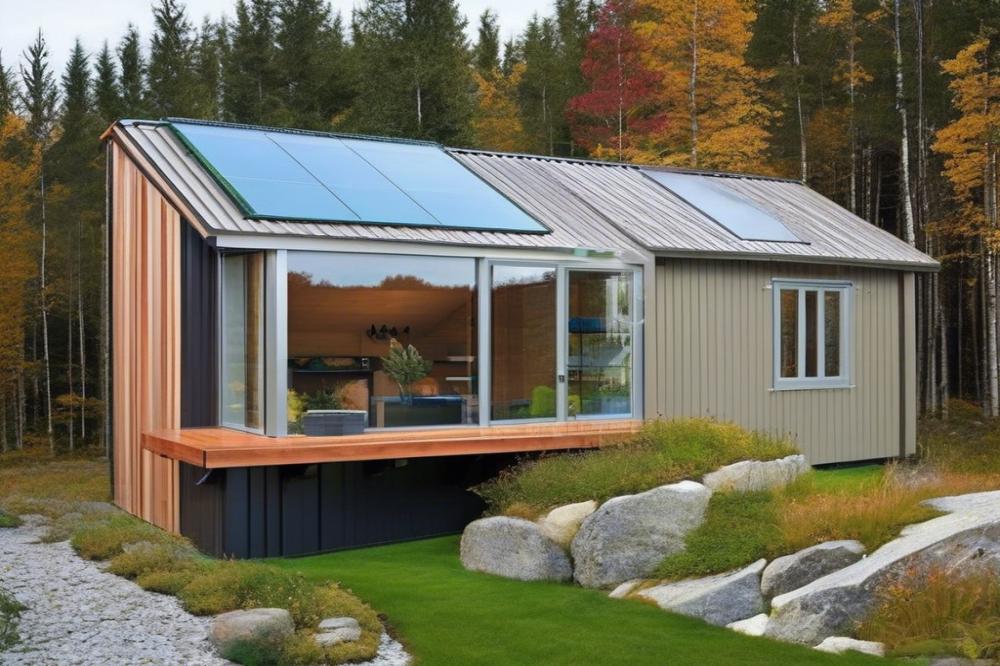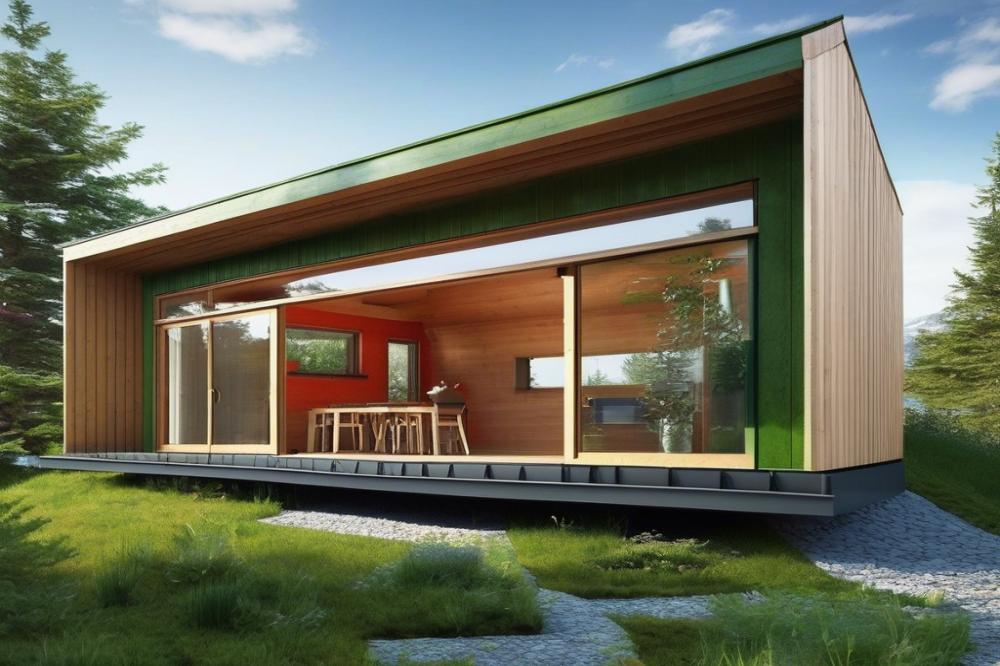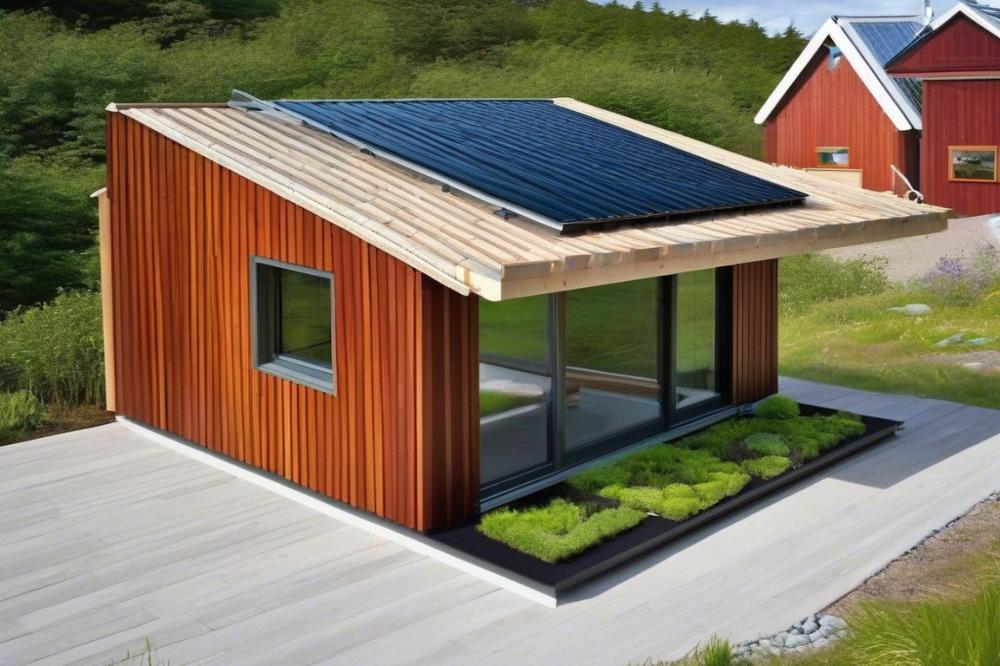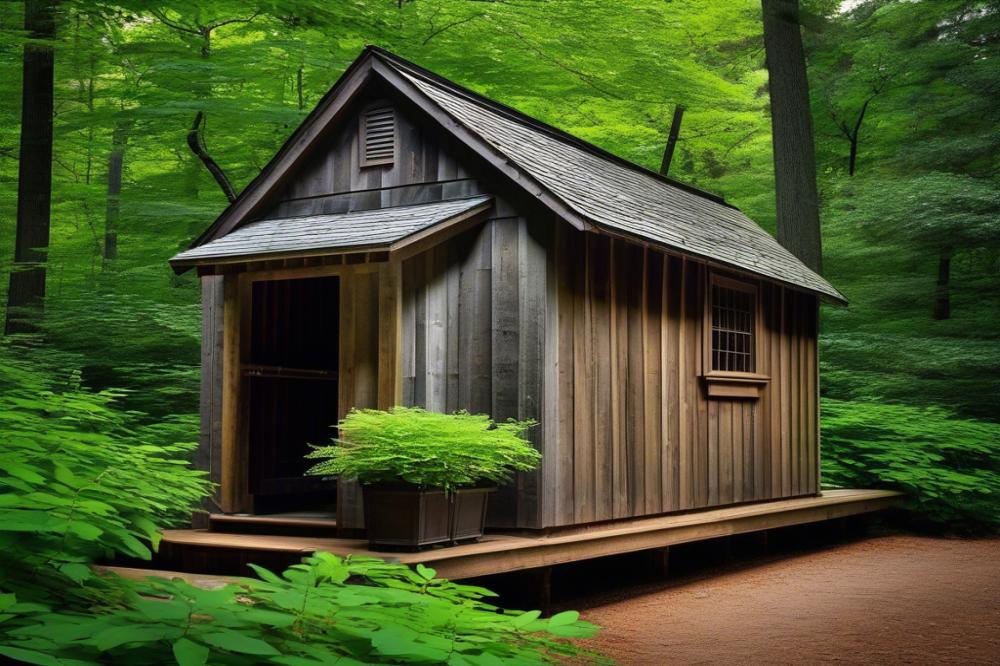Introduction
Sheds play an essential role in communities around the globe. From storing tools and gardening supplies to serving as creative retreats, their purposes vary widely. In recent years, an innovative trend has emerged: eco-friendly designs that prioritize the health of our planet. One notable example is the Green Roof Shed in Norway, which exemplifies how architecture can embrace nature rather than hinder it.
This unique structure offers a glimpse into the future of green architecture. It incorporates sustainable practices and promotes urban gardening, creating a harmonious relationship between nature and human activities. By utilizing renewable materials, the shed reduces its environmental impact significantly. Its design also focuses on energy efficiency, ensuring that it remains functional while minimizing resource consumption.
Green Roofs contribute immensely to promoting biodiversity. They provide habitats for various plant and animal species, creating ecosystems within urban areas. Moreover, they help with rainwater management, absorbing excess water and reducing runoff. This feature is particularly vital in combating urban flooding, making these roofs not just beautiful, but practical.
Insulation is another key benefit of incorporating greenery into architecture. The plants on a roof act as natural insulators, helping regulate indoor temperatures. This can lead to lower energy bills and a more comfortable living environment. The modular design of such structures allows for flexibility in construction, enabling homeowners to adapt them to their specific needs.
In summary, the Green Roof Shed in Norway highlights the potential of eco-friendly designs. It shows how society can move toward greater sustainability while embracing creativity. By prioritizing biodiversity, energy efficiency, and innovative design, we can redefine what our buildings can be.
Green Roof Fundamentals

What exactly is a green roof? Simply put, it’s a roof that features vegetation, soil, and sometimes even water features. The main purpose behind this design is to bring nature closer to urban settings. Relying on plants helps mitigate heat and offers a fresh, green look in what can often be concrete-heavy cities.
Benefits of Green Roofs in Urban Environments
Urban gardening is becoming increasingly vital as cities expand. In densely populated areas, green roofs contribute significantly to sustainability. By providing habitats, these roofs support biodiversity, which is crucial for our planet’s health. They can absorb rainwater, reducing runoff and the burden on stormwater systems. This helps prevent flooding and improves water quality. Green structures can also help cool down buildings, creating a more comfortable city environment.
Role of Green Roofs in Enhancing Insulation and Energy Efficiency
Insulation becomes more effective when natural layers are added atop buildings. With carefully chosen plants and modular design, energy efficiency increases dramatically. During summer months, green roofs lower indoor temperatures, minimizing the need for air conditioning. In winter, they keep heat from escaping, which decreases heating costs. Using renewable materials for construction further emphasizes a commitment to environmentally friendly practices.
The Green Roof Shed in Norway

The structure stands out as a noteworthy example of green architecture. It consists of a simple but effective design that caters to the needs of urban gardening enthusiasts. By combining functionality with aesthetics, this shed fits harmoniously into its natural surroundings. Its purpose goes beyond mere storage; it also supports sustainability initiatives in the community.
Description of the structure and its design
This innovative shed features a sloped roof covered with vegetation. The greenery promotes biodiversity and helps manage rainwater effectively. Walls made of timber showcase a blend of modern craftsmanship and natural appeal. Large windows allow ample natural light to enter, enhancing the overall ambiance inside. Attention to detail in every corner makes this construction appealing and practical.
Use of renewable materials in construction
Building this shed involved using various renewable materials. The primary material for its frame is sustainably sourced wood, further minimizing the carbon footprint. Insulation plays a vital role in maintaining energy efficiency throughout various seasons. Recycled materials were also employed, contributing to a greener construction process. These choices reflect a strong commitment to environmentally friendly practices.
Integration of modular design principles for efficiency
Modular design principles guided the construction of the shed. Each component is easy to assemble, making the building process more efficient. This approach allows for customization, accommodating different user needs without excessive resource use. Future expansion is also possible, adapting to the changing demands of urban gardening. Such flexibility enhances the overall utility of the space and supports sustainable living practices.
Sustainability Features

The Eco-Friendly Green Roof Shed in Norway stands as a testament to sustainable practices in construction. Every part of the shed has been designed with the environment in mind. The use of renewable materials is a key practice here. Building with locally sourced wood minimizes transportation emissions. This approach also supports local economies in Norway. Eco-friendly insulation makes it energy efficient, helping to keep heating costs low.
Another important aspect is the rainwater management system. This system collects rainwater from the roof, which can be used for irrigation or other purposes. By capturing rain, it reduces runoff and helps prevent flooding. It also conserves drinking water, a vital resource. The benefits of this system extend beyond efficiency; it promotes an ecological balance in the area.
Urban gardening is a major focus of this design. The green roof encourages biodiversity by creating habitats for different species. Plants not only enhance air quality but also provide places for pollinators. Residents can grow their own vegetables and herbs, making fresh produce accessible. This initiative fosters a sense of community, as neighbors share tips and produce.
The shed’s modular design allows for flexibility and customization. It can adapt to various needs and spaces, making it an ideal choice for urban settings. Incorporating features like solar panels and wind turbines could further boost its renewable energy capabilities. This adaptability is essential for modern green architecture.
Biodiversity and Ecosystem Benefits
Urban areas often struggle to maintain biodiversity due to concrete jungles and limited green spaces. This lack of wildlife impacts ecosystems negatively. In Norway, initiatives that promote sustainability help balance urban life with nature. Green architecture, like the green roof shed, offers a solution to this challenge.
Creating habitats for various species is critical in urban settings. The rooftop gardens provide an oasis for birds, insects, and other wildlife. With a variety of plants, these spaces mimic natural environments, encouraging species to thrive. Urban gardening acts as a refuge, fostering a connection between nature and city life.
Local ecosystems benefit immensely from such initiatives. Rainwater management is improved as plants absorb and filter rain, reducing runoff. This process not only aids in water conservation but also enhances insulation for buildings. Energy efficiency increases when rooftops are green, lowering heating and cooling demands throughout the year.
Moreover, the use of renewable materials contributes to the overall goal of sustainability. Materials like recycled wood and composites can further boost the environmental performance of structures. Modular design adds flexibility, allowing for unique configurations that can adapt to different urban settings. Each installation contributes to a network of green spaces that enhances urban ecology.
Biodiversity is not just a buzzword; it’s a vital part of thriving urban areas. By supporting nature within these spaces, cities in Norway can create healthier environments. This approach enriches the urban landscape while promoting ecological awareness among residents, driving a more sustainable future.
Final Thoughts on the Green Roof Shed in Norway
The Green Roof Shed represents a significant stride towards sustainability in Norway. By integrating nature into urban spaces, these structures offer ecological benefits that can reshape our landscapes. They also encourage local biodiversity and help in managing rainwater, providing practical solutions to environmental challenges.
Looking ahead, the future of green architecture appears promising. As awareness of climate change grows, it is clear that innovative designs will play a crucial role in addressing environmental issues. Communities around the world are starting to embrace eco-friendly building practices, and this trend is likely to continue.
Encouragingly, every individual has a role to play. Adopting eco-friendly practices in construction globally can result in long-term benefits for both people and the planet. Small changes can lead to significant impacts, and it’s time to consider how we can contribute to a healthier environment. With projects like the Green Roof Shed setting a standard, the path towards sustainable design can be both achievable and inspiring.



